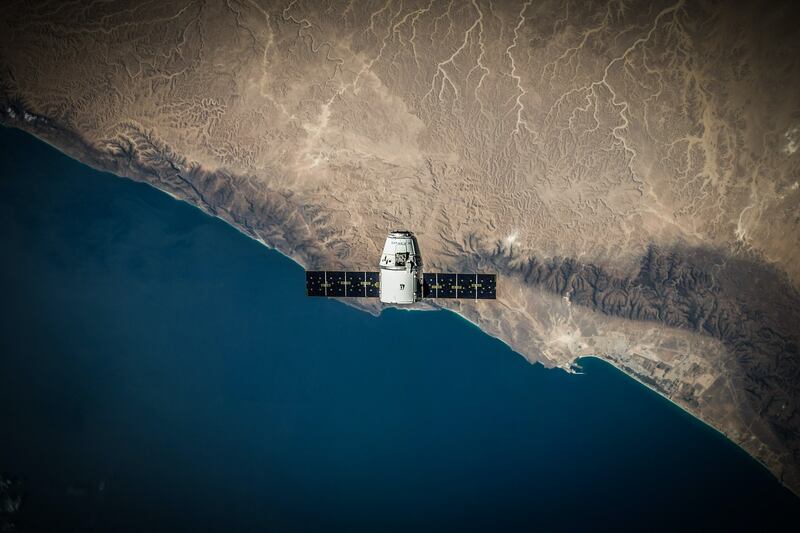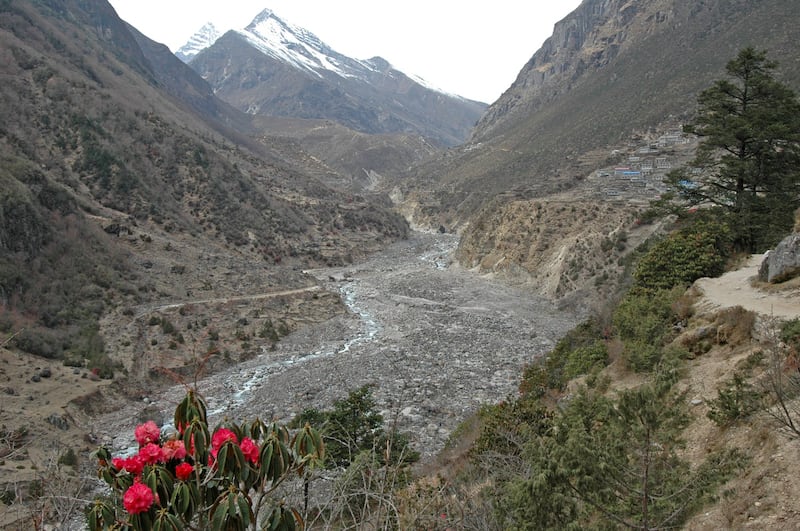Extreme environmental events are increasingly interconnected and edging humanity perilously closer to a series of catastrophic tipping points, where the consequences of inaction could prove irreversible, new United Nations research has warned.
The cumulative effects of climate change and the unsustainable utilization of natural resources have pushed humanity to the brink of confronting six interconnected tipping points, including escalating rates of extinction, groundwater depletion, glacial melting, extreme heat, space debris, and uninsurable future, the U.N. University's Institute for Environment and Human Security (UNU-EHS) said Wednesday in the report " Interconnected Disaster Risks 2023."
“As we indiscriminately extract our water resources, damage nature and biodiversity, and pollute both Earth and space, we are moving dangerously close to the brink of multiple risk tipping points that could destroy the very systems that our life depends on,” said Zita Sebesvari, lead author and deputy director of UNU-EHS.
“Additionally, we also lose some of our tools and options to deal with future disaster risk.”
The U.N. report cautioned that the potential extinction of one million plant and animal species within a few decades could lead to a domino effect of extinction among species dependent on them, increasing the risk of ecosystem collapse.
The report said that groundwater depletion, critical for over 2 billion people and crucial for agriculture, is approaching a tipping point.
Over 70% of groundwater is used for agriculture. As more aquifers are depleting faster than they can be replenished, it threatens food production systems, the report said.
Additionally, the runoff from melting glaciers is expected to decrease in the future.

The researchers also issued a stark warning regarding the escalating danger of space debris, cautioning that collisions in space could render Earth’s orbit “unusable,” jeopardizing future space activities, including satellite monitoring of environmental threats.
Another critical tipping point highlighted in the report relates to increasing climate-related hazards, making insurance increasingly unaffordable.
Hot spot Asia should pay attention to tipping points
The Asia Pacific region is a hot spot for several risk tipping points, Sebesvari and Caitlyn Eberle, a senior researcher and co-lead author for the report, said. Some countries in the Asia Pacific region are hot spots for unbearable heat and groundwater depletion risks.
“A specific challenge is that some places in the Asia Pacific may experience several tipping points simultaneously,” they said, adding the United Arab Emirates, Pakistan and India are hotspots for groundwater depletion and unbearable heat, while Pakistan and India are also facing the impacts of melting glaciers.
“For the risk tipping point groundwater depletion, India, China, Pakistan and Saudi Arabia belong to some of the largest groundwater users globally,” the authors told Radio Free Asia in an email interview.
India tops the world in groundwater usage, surpassing the United States and China combined, while Pakistan has the highest water consumption per unit of GDP.

Global warming has caused glaciers worldwide to melt twice as fast as they did in the past two decades.
Over 90,000 glaciers in the Himalayas, Karakoram, and Hindu Kush mountains are nearing a critical point. This tipping point means they will produce less freshwater, jeopardizing the lives of about 870 million people who rely on them, as per the report.
The two authors also pointed out several “accelerating extinctions” from the Asian Pacific region, including Javan Tiger in Indonesia, which was last seen in 1976 and declared extinct in 2003 mainly due to habitat destruction.
In Malaysia, mangroves are critically endangered due to pollution, which could further impact habitat loss for other species and ecosystems.
Climate models suggest that wet bulb temperature (WBT) above 35 degrees Celsius (95 degrees Fahrenheit) will regularly be exceeded in the next 30 years in places like South Asia, the Persian Gulf and the Red Sea, and within 50 years for Eastern China and Southeast Asia, the duo said.
A 35 C WBT signifies a dangerous mix of high temperature (40 C) and 75% humidity, putting human health at risk. At this point, an unaided healthy person can only survive for six hours because they can’t effectively cool down by sweating.
China faces a dichotomy
Sebesvari and Eberle said that China has been re-imagining cities by including more green areas, which not only help to decrease urban flooding but also lower urban heat.
“However, China is a hotspot for groundwater extraction, for species extinction and contributes increasingly to space junk in the orbit,” they told RFA. “In terms of reducing climate risks to avoid tipping points, China faces a dichotomy.”
“While they are global leaders in the renewable energy transition (hosting nearly half of the world’s total operating wind and solar capacity), they are at the same time the world’s largest per capita emitter of CO2, quadrupling the number of new coal power projects between 2021 and 2022,” they added.
In 2022, China was the top coal consumer, producer, and importer worldwide, with significant oil and gas consumption, making it the leading global CO2 emitter, responsible for a third of total emissions.
The country’s total CO2 emissions last year amounted to a staggering 12.1 gigatons, two-thirds of which originated from using coal in electricity generation and industrial processes, resulting in 25% of global energy-related emissions.

China will retain its status as “the largest emitter in the world in 2050,” the Paris-based International Energy Agency said in a report Tuesday.
China’s 2021 Space White Paper highlights the importance of reusable rockets. The Long March 9, China’s super heavy rocket, is being redesigned for reusability and is set to launch by 2030.
“However, there is a limited amount of objects that can orbit safely in space and the risk of crashes is already imminent,” the two authors said.
The report also presents a new framework for addressing risk tipping points through “Avoid” and “Adapt” solutions. These solutions involve either delaying the progression or fundamentally transforming systems to be more resilient.
Human-induced climate change is causing extreme heat waves that could become lethal in some areas. An Adapt-Delay solution installs air conditioners to delay the danger, while an Avoid-Transform solution focuses on reducing greenhouse gas emissions and promoting low-carbon living to prevent the tipping point.
The report was released ahead of next month’s COP28 climate conference in Dubai, where world leaders are meeting to discuss and take action on global climate change issues.
“Real transformative change involves everyone,” said Sebesvari. “The report serves as a timely reminder before the U.N. Climate Conference that we must all be part of the solution.”
Edited by Mike Firn and Taejun Kang.
